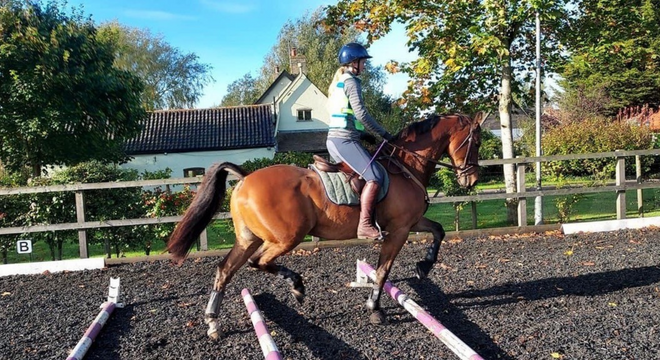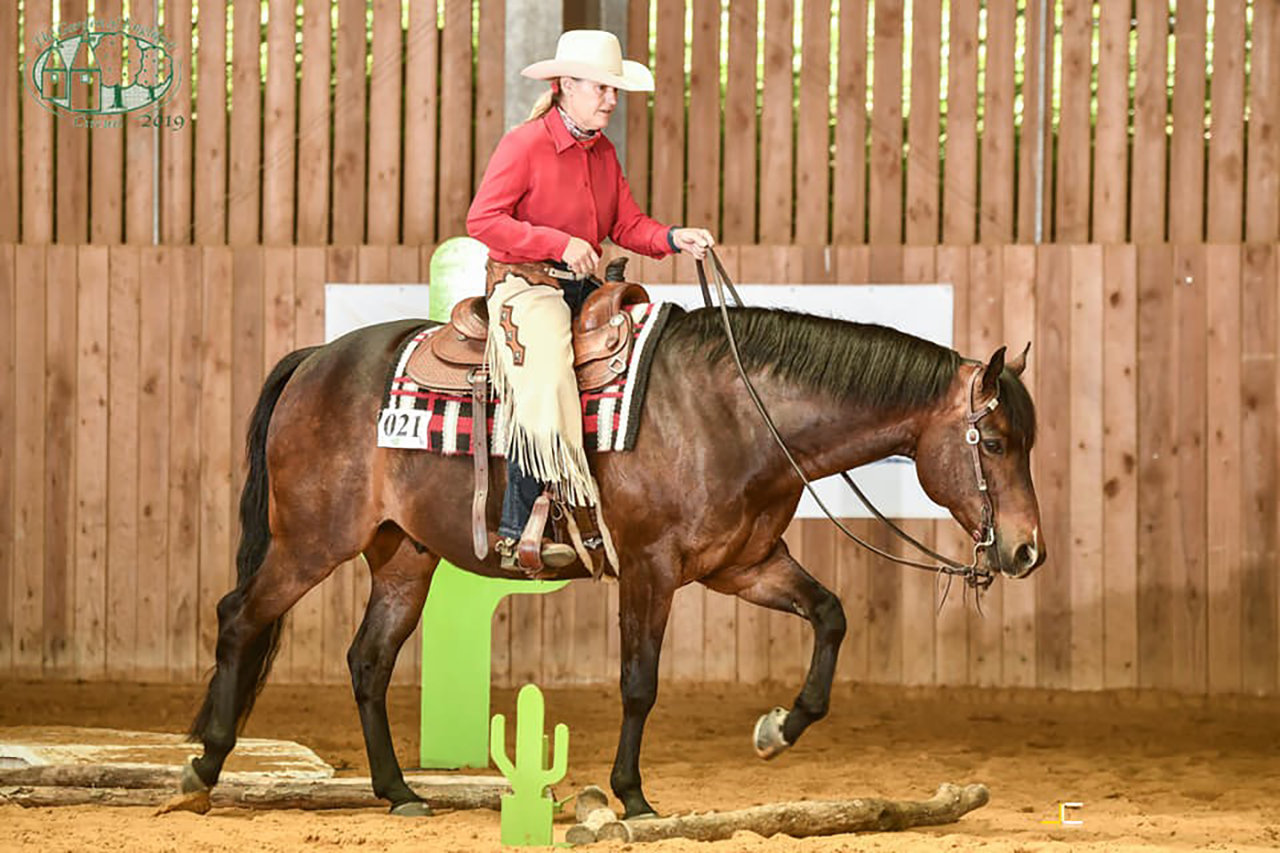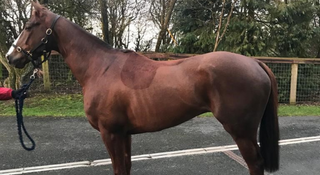
The power of polework
Polework is a fun and different way to exercise both horse and rider. It involves setting out variations of poles on the ground to...
10 August 2022
Read More
History of western riding
In the 15th century the Spanish Conquistadors colonised the Americas taking with them a style of riding which evolved to suit the working needs of ranchers and cowboys in the American West.
There are two styles of western riding, Californian and Texan. The Californian style is known as Vaquero and sticks firmly to its origins of Spanish/classical training techniques, taking many stages to achieve a fully trained (finished) horse. The Texan style developed with the need to produce a reliable work-horse in a shorter time frame and is the more widely used style today.
Both styles require a high level of training; finished horses must be ridden with one hand on a loose rein whilst maintaining self-carriage.
Introduction to the tack
The most noticeable difference between English and western tack is the saddle. Designed for practical use a western saddle has a larger surface area which allows the rider’s weight to be evenly distributed over the horse’s back. Riders also feel very secure and comfortable which is appealing to those who trail ride/hack for several hours at a time.
There are many different types of western saddle depending on the required purpose. Show saddles are built on an equitation tree which holds the rider in a position similar to a dressage saddle and they are usually adorned with elaborate tooling and silver accents.
Reining saddles allow for more rider movement and roping saddles are built to withstand the huge force of a steer being roped and held on the saddle horn. Trail saddles are lighter weight, the seats are well padded and sometimes the horn is removed.
Bridles come in many different styles from standard work bridles with a browband and throat lash to a single headpiece and small loop around one ear. Nosebands are generally not used and are not permitted in most classes. Split reins are the most popular but other types can be used such as romal and mecate.
Romal reins are made from braided leather/rawhide and consist of two reins joined together which continue into a single, long braided tail. Used only with a curb bit they are held with one hand on the reins with the other hand holding the tail and they allow for a very subtle connection and light rein cues.
Mecate reins are in fact one single long rope, usually made of braided horsehair but can just be fashioned from strong sailing rope. They are used with either a bosal or combined with slobber straps on a snaffle. They must be tied in a specific way that produces reins and a leading rope. Slobber straps are pieces of leather with a hole through which the reins are tied.
There is a vast array of western bits; all young horses are started in either a snaffle or bosal (western hackamore) and ridden with two hands on the reins. It is only when they reach the required training level that they are they transitioned into a curb bit and ridden one handed.
Western horses
Any breed of horse can be trained and ridden western style and English ridden horses can also be successfully retrained, however certain American breeds like the American Quarter Horse are the most popular choice.
Quarter Horses were named after the distance they raced - they were the original quarter mile drag racers! They needed this short burst of speed to run down a cow, stop instantly and stand patiently while the cow was tended to. Quarter Horses are renowned for their laid-back attitude, good temperaments and well-muscled bottoms!
Getting started
Why ride western? The appeal to most people when asked this question, is that everything is far more relaxed and they feel safe, secure and comfortable. Western horses are trained to respond to the lightest aids, they guide and stop using subtle weight shifts and the western paces are slower.
Another big plus is the clothing, no jodhpurs/breeches are needed, just jeans and a good pair of cowboy boots. In the show ring ladies wear bright sparkly tops with matching saddle pads, chaps are optional as is a well fitted “Stetson” type hat, although hard hats are encouraged and mandatory for all youth riders.
Brief explanation of western competitions
There are several different classes available for the western competitor; some are more rider focused such as western horsemanship where the rider performs a set pattern and is judged on style, position, accuracy and turnout.
Reining and Ranch Riding are performance classes, where riders execute a set pattern based on the manoeuvres required to work cattle or ranch work. Competitors are scored on the horse’s ability and suitability, with penalties for deviation or disobedience.
Trail is a class with obstacles similar to those you would find while trail riding. The horse and rider negotiate the course and are awarded points for style and accuracy but penalties are deducted for touching obstacles or disobedience.
Western Pleasure is a showing class and is judged “on the rail” (arena perimeter). Horses perform the required gate requested by the judge and are scored on movement, cadence and obedience. In Hand classes include Halter, Performance Halter, Ranch Conformation and Showmanship which is judged on the handler’s ability.
There are several other western competitions such as Western Dressage, Cowboy Dressage, Cattle classes and Speed Events like Barrel racing.
Classes are available for all levels starting with walk/jog and novice through to open but the most enjoyable part of western showing is the camaraderie, you will find everyone very encouraging, helpful and supportive.
Where you can learn to ride western
To find out more about western riding and where you can go for lessons or find an instructor visit the Western Equestrian Society web site www.wes-uk.com
Sovereign Quarter Horses offer western experience days and lessons on well trained horses.
Contact them at www.sovereignquarterhorses.com
For more information on American Quarter Horses visit www.aqha.uk.com
MM-16096

Polework is a fun and different way to exercise both horse and rider. It involves setting out variations of poles on the ground to...
10 August 2022
Read More
Polework is a fun and different way to exercise both horse and rider. It involves setting out variations of poles on the ground to...
10 August 2022
Read More
Retraining a racehorse to become a leisure or competition horse can be very rewarding and enjoyable.
02 December 2021
Read More